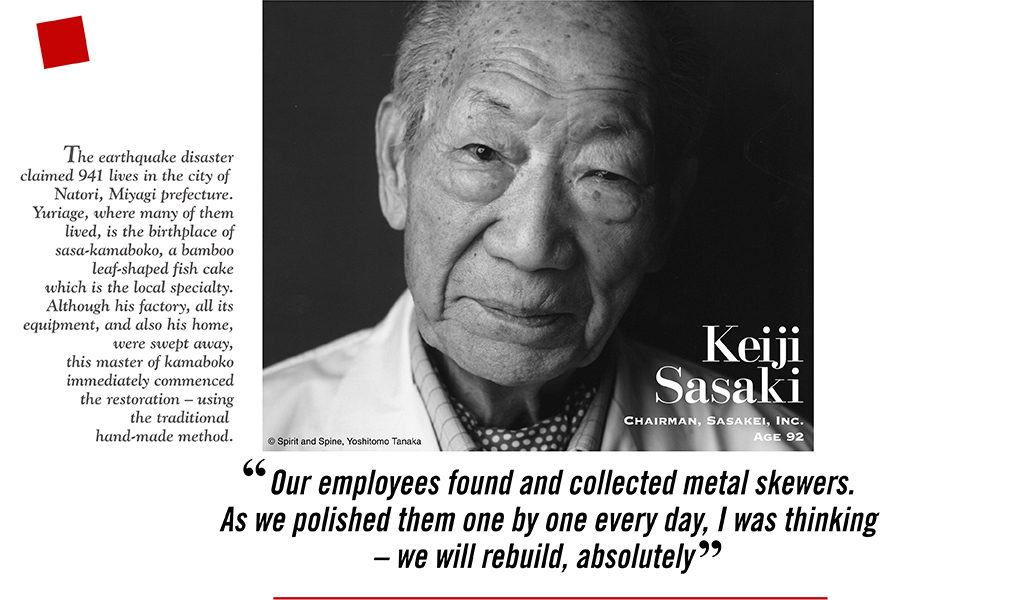
Ten days after the disaster, he headed for Yuriage and witnessed the full extent of the disaster. He was unable to identify where his house, factory, even the main store used to be. Considering so many other victims, he couldn’t cry over his own misfortune. Yet his tears fell in spite of himself when he saw the horrible devastation of a temple. It was there, six years ago, that he had celebrated the completion of a construction project for which he had been earnestly engaged as a fundraising delegate. His grateful contribution to his home town began when he gained employment at age 15, and donated toward the building of a statue of Kinjiro Ninomiya.* The statue barely survived the tsunami at Yuriage elementary school. During the war, he was called into the navy and went to the front. In 1945, his unit was deployed to Iwo-Jima, but acute appendicitis caused him to be taken from the island – and he escaped death. In July of the same year, Atsu, who later became his wife, experienced the great Sendai Air Raids which resulted in a death toll of 3,000. Making kamaboko was the family business in the home where he was born. These skills, achieved through helping out in business from the time he was a schoolboy, re-emerge with profound relevance. When he started his own business, he was favored by the isaba (“fishmongers” in a northeast Japanese dialect) who appreciated his way of working, and then his kamaboko won popularity in the large market in Sendai. The team of husband and wife now use their workmanship to meet the challenge of reopening their factory, which is also the stronghold of their family and employees. The two, who have overcome experiences spelling the difference between life and death, harmoniously put their hearts into the hand-made, hand-grilled sasa-kamaboko.
[Note]
*Kinjiro Ninomiya was a prominent Japanese agricultural leader and scholar in the 19th century. He was renowned for his diligence, and statues of him as a child became very popular and were found at many elementary schools in Japan.

Keiji Sasaki
Born in Yuriage, Natori City, in 1922. Founded his own business in 1966. Having turned over the operation to his oldest son, he was enjoying his retirement. Lost three employees in the great tsunami. Seeking to renovate the only remaining store as a kamaboko workshop, he began restoration. The store also operates mail order
Cooperation: Sasakei, Inc. and Mr. Tomoaki Sato, President, Sennan RINRI Hojinkai
This article originally appeared in “Shinsei” magazine, April 2010 issue,
published by RINRI Institute of Ethics. Partially rewritten to update for this
internet release.







































































































